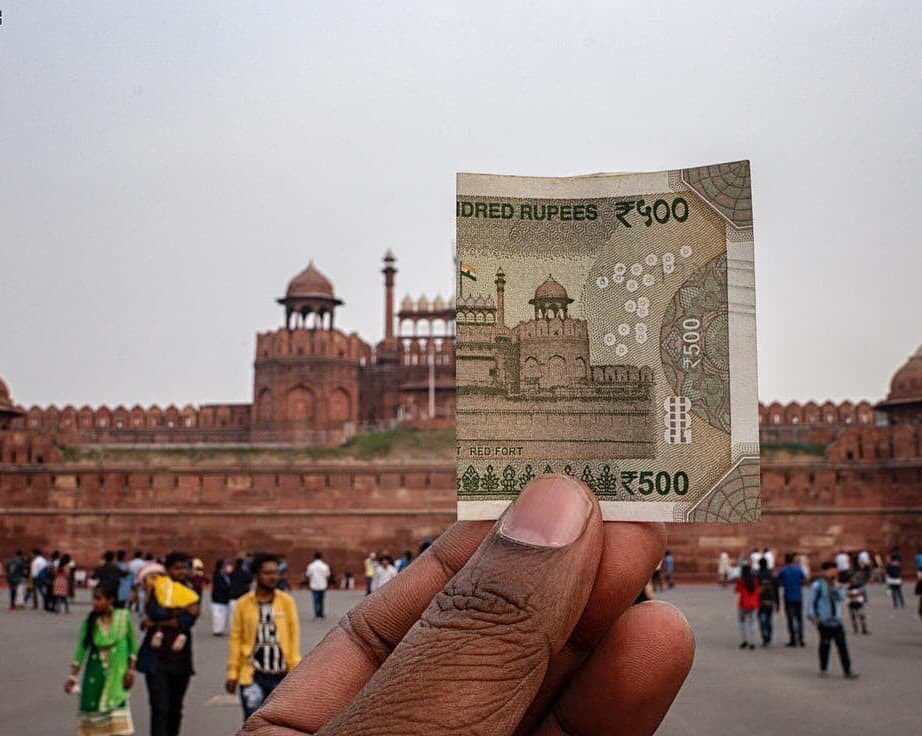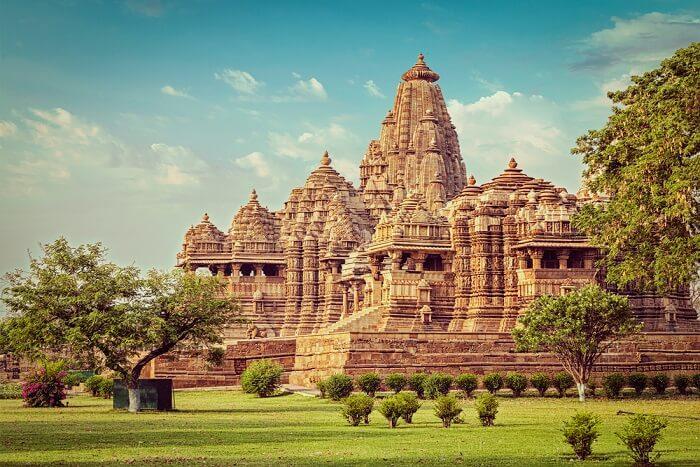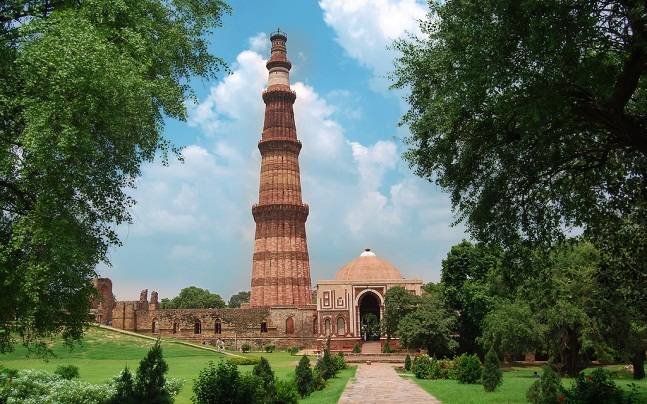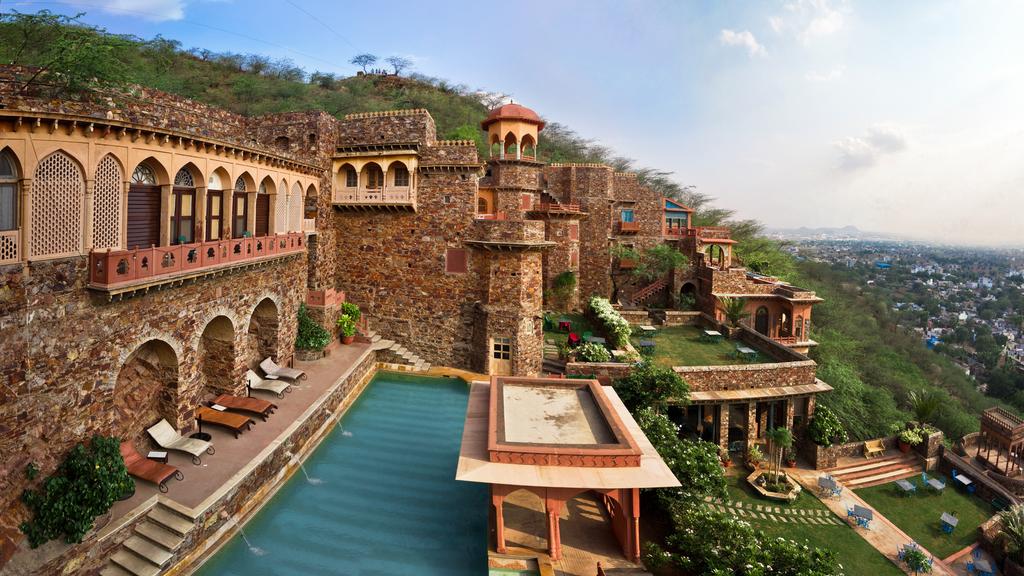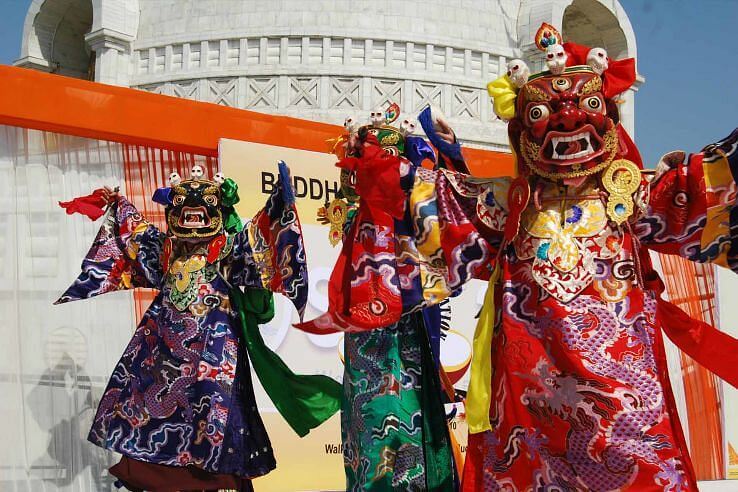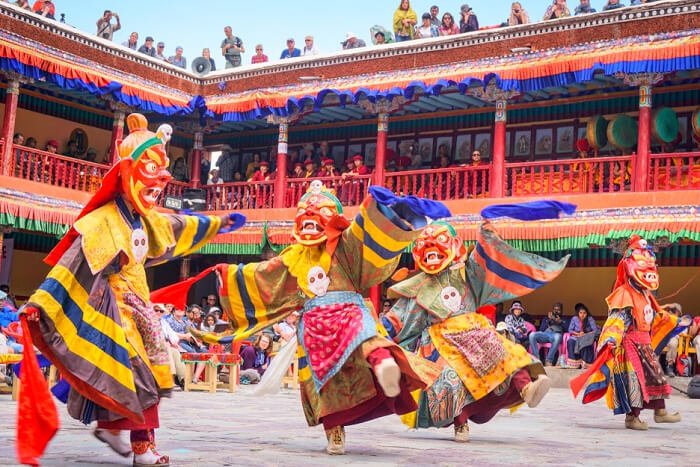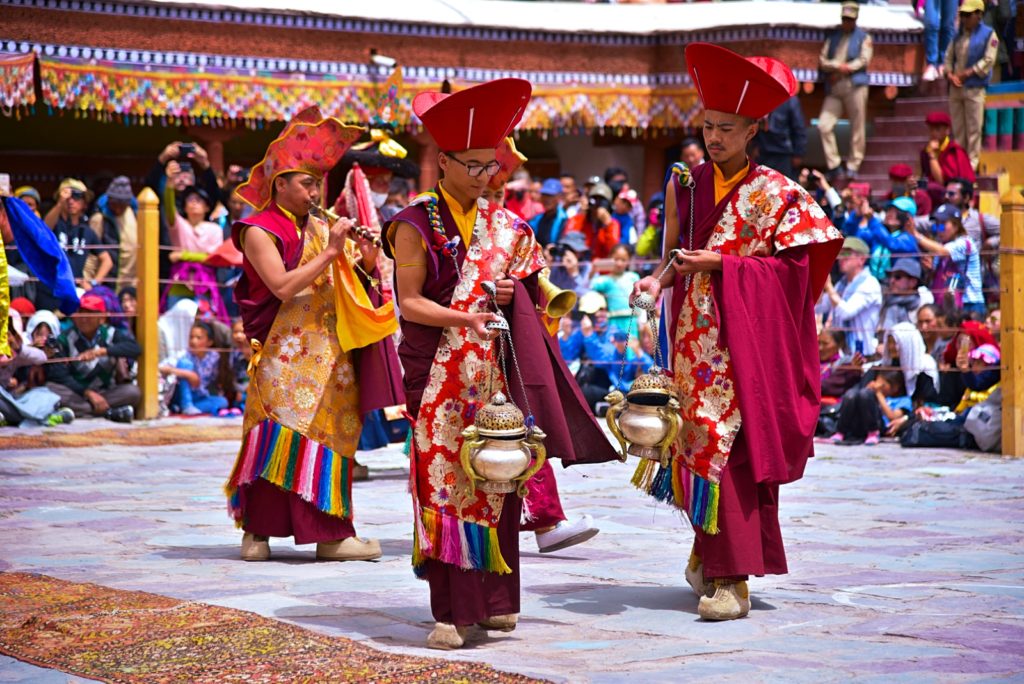
As the months of winter passes by and the snow stops draping the city, Ladakh is then filled with a very refreshing as well as exciting zeal so that they can celebrate the best festival in the valley of Ladakh.
This festival is called the ‘Hemis Festival’. The city of Ladakh is the middle of the majestic mountains. Magnificent landscape, rolling hills as well as rugged terrain and this whole area is covered by the colours and charms of the festival.
The Hemis festival successfully brings a feel of liveliness in the valleys of Ladakh with the grand celebration of this festival.
The rustling in the air reminds the people here of the festivity in the city and it also bring with it the reminder of the cultural saga and the shades of diversity here.
Dates of Hemis Festival
According to the Gregorian Calendar, the date of the Hemis festival falls in the month of June and the festival is celebrated for a stretch of two days. In the year 2020, the Hemis festival is set to be celebrated on the dates of 30th June 2020 and 1st July 2020.
Except from the dates, the festival is set to be celebrated on the tenth day of the monkey month. However, in different communities, this festival is celebrated at different times. For the followers of Buddhism, the monkey month varies.
According to some, the monkey month is considered to be the fifth month of the year in the Lunar Calendar of Buddhism and the other communities consider it to be the third, fourth or the sixth month. It is the lamas of the community that decide the date of the festival.
Venue of the Hemis Festival
There is a monastery in Ladakh called the Hemis Monastery or the Hemis Gompa. There is a place in Ladakh called the Hemis Village where this monastery is situated. At this time of the year, this place is overcome with the vibes of festivity which overwhelms the whole region of Ladakh at this time.
Celebrations & Rituals
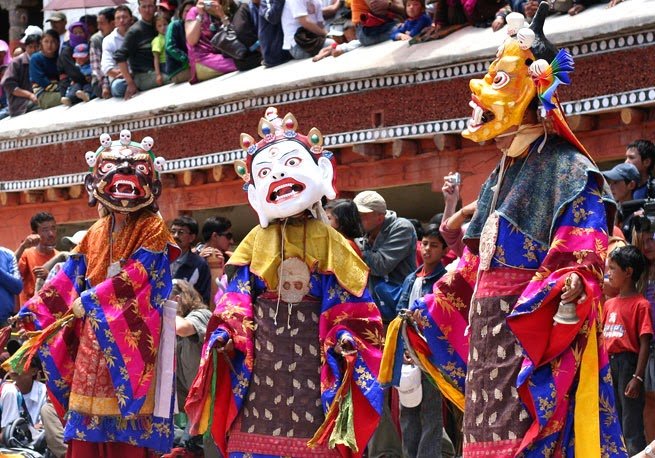
The celebration of this festival marks the significance of the historical, cultural and also the regional traditions that the followers of Tantric Buddhism in Ladakh believe and follow.
The celebration of the Hemis festival includes the practise of numerous traditional rituals in order to worship the Buddhist monk Padmasambhava. It is believed that being a spectator to these rituals grants to the spectators’ good physical as well as spiritual health. The tourists are thus allowed to spectate through the customs and rituals of this tradition.
A popular belief is that the mission of Lord Padmasambhava was to improvise the spirituality of the human beings on this planet. The ceremony begins early in the morning and a lot of people turn up to spectate this event to earn the blessings of Lord Padmasambhava.
There is a courtyard right in front of the main door of the monastery. The celebrations of the festival takes place in this region and there are also two raised platforms here for that purpose.
There is a pole right in the centre of this courtyard. There is also a dais here where the cushions are placed here for the lamas to sit on. A table is placed before them and then the items of the rituals, like water cups, dough, butter, rice, incense sticks and more are placed here.
Apart from the rituals, there are also a few forms of celebration in this place. A few forms of celebrations during the Hemis Festival are briefly described below –
1. Music
During the festival, a portrait of Lord Padmasambhava is put up and this is accompanied by some clashing and cymbals as well as beating of drums. Music is an essential part of this festival. The music played here is traditional music and only drums, cymbal and wind instruments are used for this. The music is extremely captivating and provides to the festival an identity of its own.
2. Chham Dance, or the Masked Dance
The Chham is one of the main attractions of this festival. This is a dance form which is a ritual as well as a celebration and marks the festival as different from the other festivals. This is a time when the lamas where dress up in attires of red, blue and yellow colour. They also have many ribbons, mask as well as horns. These masks are also of various types, some of them look extremely grotesque while others are flat. The lamas that take part in this dance cover their faces with a mask to depict tales as well as folklore.
Many people gather in the monastery to witness the event. At first when the music begins, it has a soft note. It is eventually that it turns intense and fast. The dance of the lamas end are not just for entertainment, they end with a message that they want to transfer to the audience. The end of this dance performance marks the gracious triumph of the leaders of the dancers over the evil which is made of dough. The performance portrays the message of victory of good over evil.
History of Hemis Festival - Legends & Traditions
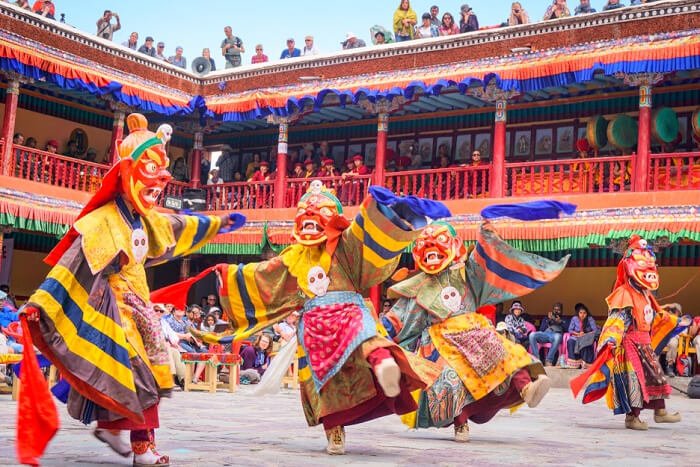
Jammu and Kashmir in India is very culturally rich and offers a lot to the followers of Hindu, Islam Buddhist traditions. Like the other major religions across the world, Buddhism has also assimilated different practices and cultures in various regions.
Lord Padmasambhava was one of the most renowned monks of the Buddhist religion. The life of this lord can be traced back to the 8th century and his name is also associated with the establishment of the first Buddhist monastery in Tibet. The history of the monastery of Hemis in Hemis also dates back to the 8th century.
Maximum of the factions of Tibetan Buddhism are devotees of the Vajrayana rituals or the Tantric customs that has Padmasambhava as the central figure related to its spread in the Indian subcontinent.
Padmasambhava is also revered as a re-embodiment of Lord Buddha because of his date of birth that is the tenth day of the Monkey month. This is also the same time period which the Lord Gautam Buddha had predicted to be the time of birth of his successor.
It is also a famous theory and believe that Lord Padmasambhava had taken birth into the Earth through a lotus, thus resulting in his name. The meaning of the name Padmasambhava means “Lotus Born”. The birth of this renowned lord is celebrated through the Hemis festival in Ladakh and the Tsechu Festival in Bhutan.
Significance of Hemis Festical
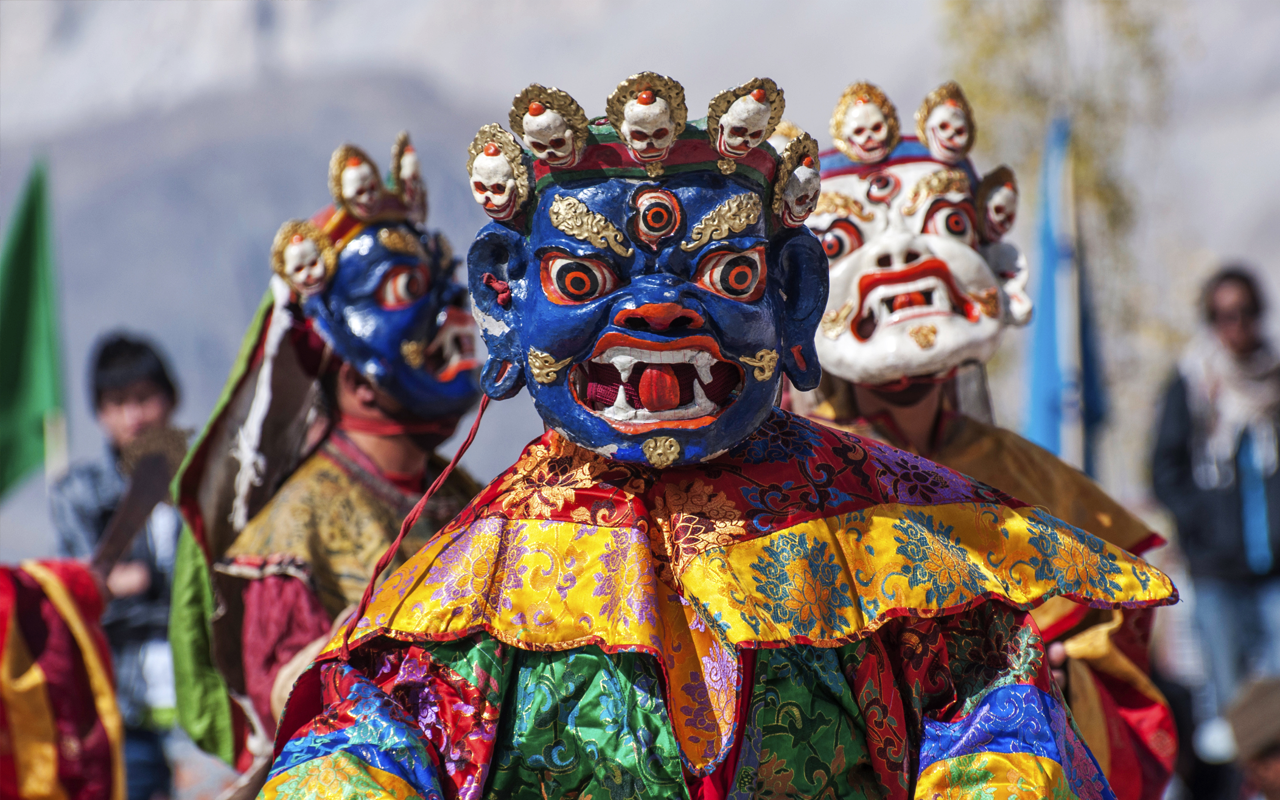
One of the major reasons for the celebration of the Hemis Festival in Ladakh is that this festival is one of the major places to showcase the Buddhists here. With the help of the celebration, the Tibetan Buddhists here try to bring justice to the glorious history of Tibet.
This Hemis festival can be dated back to the time of the origin of the Buddhist legends, which is as early as the 8th century.
The Hemis Festival has survived for all these centuries throughout the dangerous natural phenomena and till date celebrate the birth of the famous Tibetan monk, Padmasambhava, who is also known as the Second Buddha.
Another name of Lord Padmasambhava is Guru Rinpoche. He was a spiritual leader of the Buddhists and it is believed that Guru Rinpoche had thrown out the evil spirits and demons from the valley of Ladakh during the period of 8th century.
Padmasambhava is also the man responsible to preach Buddhism in the Himalayan region. This person was a very significant figure in the history of Buddhism and the significance of this festival is the birth of such a great individual.
How long Hemis Festival is Celebrated ?
For the year 2020, the dates of the festival are 30th June and 31st July. Therefore, the length of this festival is two days.
Main Attractions of Hemis Festival in Ladakh
This Hemis Festival one Ladakh has certain highlights which form the main attraction of this place and also is responsible for the popularity of this festival. The highlights of the Hemis Festival of Ladakh are thus mentioned below:
1. Devil Dance
The Devil Dance is one of the most eminent and signature part of this festival. This dance is performed here in this festival for the people to see.
2. Chang
A local drink that is served to the people here during this festival is called Chang. It is a must try beverage.
3. Handicraft
During the Hemis festival, the locals here also organise an exhibition where the people can find all kinds of handicrafts. The tourists who are interested can also buy some handicrafts form this place.
4. Chham Dance
The Chham dance in the Hemis Festival is a form of masked dance and it is depiction of the triumph and victory of the good over the evil. This is a majorly significant event of this festival and is something that you absolutely must witness if you are in visiting Ladakh at this time.
About Hemis Monastery
The Hemis Monastery is also known as the Hemis Gompa. This monastery is located in the Ladakh region and is popularly known as the central seat of the Kagyu ancestry of the Buddhist belief. One of the central Tibetan Buddhist monks is the man named Padmasambhava. He is also often referred to as an incarnation of Lord Buddha himself and sometimes also as the Second Buddha.
This man has also helped in the building of the Buddhist temple located in Tibet. The Hemis Monastery in the Hemis village in Ladakh eagerly celebrates this two day festival in order to celebrate the birthday of the Padmasambhava.
How to Reach Hemis in Ladakh
There are several ways to reach the Hemis Monastery in the Hemis village in the Ladakh region. The railway station which is situated the closest to this region is the Jammu Tawi Railway Station. The railway station is situated at a distance of around seven hundred and ten kilometres from the Hemis village.
The other option is to travel through Shimla and visit Manali. From Shimla, you can rent a taxi or even a bus and then ride to Leh. From Leh, all you need to do is to ride another bus or hire another taxi and then reach Hemis.
Another last way to reach Hemis village is the Leh Kushok Bakula Rimpochee Airport. The airport is located at a distance of only forty kilometres from the village of Hemis. This would be the easiest way to go to the village as the airport is closer to Hemis village than the railway station.
Know more about How to Reach Ladakh?

